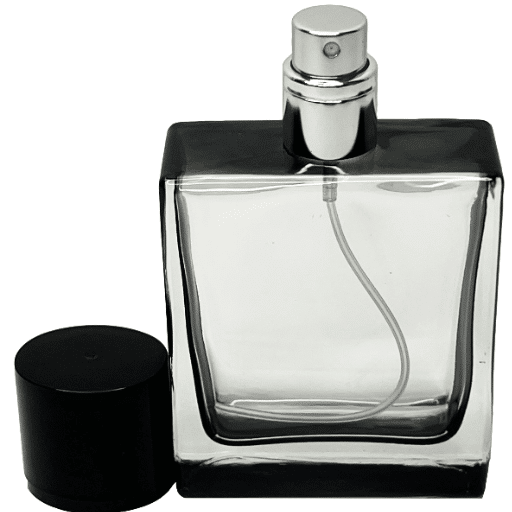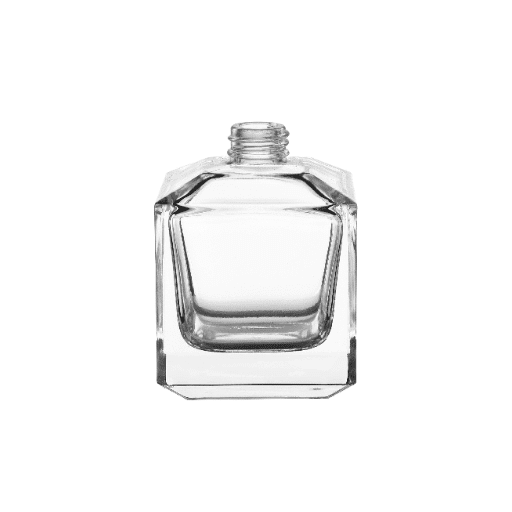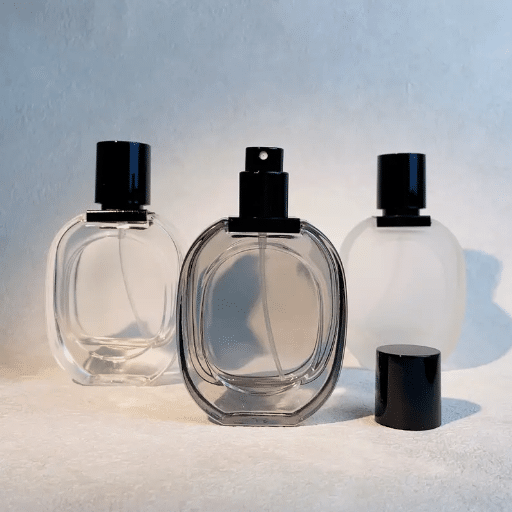Perfume bottles often feature intricate designs and premium materials that make them too beautiful to simply discard after use. This article explores a range of creative and practical ways to give your empty perfume bottles a second life while also supporting sustainable practices. From upcycling them into elegant home décor pieces to repurposing them for functional storage, the possibilities are diverse and rewarding. Additionally, we will look at environmentally conscious recycling methods to ensure that every component of the bottle is disposed of responsibly. Whether you’re passionate about creativity, sustainability, or simply looking to declutter, this guide will inspire you to transform your empty perfume bottles into both beautiful and eco-friendly solutions.
What to Do with an Empty Perfume Bottle?

Repurpose for Creative Projects
Empty perfume bottles can be transformed into elegant decorative pieces. For instance, they can be used as mini flower vases, reed diffusers, or candle holders. Their intricate designs and shapes make them ideal for adding a touch of sophistication to any space.
Refill and Reuse
Many perfume bottles are designed with removable nozzles, making them suitable for refilling. You can use them to store homemade fragrances, essential oil blends, or even as atomizers for other liquids like room sprays.
Recycling Options
To dispose of empty perfume bottles responsibly, ensure they are clean and free of residue. Most glass bottles can be recycled through local recycling programs, but verify if the metal or plastic components (such as caps or nozzles) need to be separated.
Gifting and Collecting
Perfume bottles with unique or vintage designs can be gifted to collectors or used as part of a collection. Their artistic appeal often makes them valuable as display pieces.
Creative Reuse Ideas for Perfume Bottles
I find that empty perfume bottles can be creatively repurposed in several practical and decorative ways. For instance, they can be turned into elegant flower vases for small blooms or minimalist arrangements. To do this, ensure the bottle is thoroughly cleaned and remove any non-glass components such as the spray nozzle or cap. Additionally, perfume bottles can be used as stylish reed diffusers by filling them with essential oils and inserting reed sticks. For this, choose oils with a low viscosity to ensure effective absorption and diffusion.
Another idea is to utilize the bottles for DIY liquid storage such as homemade face mists or room sprays. Make sure to sterilize the bottle to prevent contamination and ensure the spray mechanism is functional. Finally, they can serve as decorative pieces by filling them with colored sand, beads, or fairy lights, creating an aesthetic centerpiece. Each reuse option offers a sustainable way to give these intricate designs a new life.
Recycling Options for Empty Glass Perfume Bottles
Recycling empty glass perfume bottles involves a few critical steps to ensure proper disposal and sustainable practices. First, confirm whether your local recycling program accepts glass perfume bottles, as some facilities may have specific requirements for glass recycling. Before recycling, thoroughly clean the bottle by rinsing out any remaining liquid and removing non-recyclable components such as caps, spray mechanisms, or decorative materials (e.g., metal or plastic embellishments). These parts are often made from mixed materials incompatible with glass recycling streams and should be discarded or reused separately.
If your glass perfume bottle features intricate designs, it may be classified as non-standard glass, which some recycling facilities cannot process due to differences in melting points and composition compared to standard container glass such as jars or bottles. Always check with your local facility for clarification. For bottles made entirely of recyclable glass, the technical parameters typically state that glass may need to be separated by color (e.g., clear, green, amber) to meet recycling guidelines and maintain the purity of recycled materials.
Alternatively, some high-end perfume brands offer take-back programs or incentivized recycling systems. Through these initiatives, consumers return empty bottles to stores, where they are collected and sent to specialized recycling partners capable of processing decorative or complex glass. These programs often align with corporate sustainability efforts, reducing waste and promoting circular economies. Before recycling or reusing, verify these options with the perfume brand or manufacturer for further guidance.
Transforming Empty Perfume Bottles into Decor
Repurposing empty perfume bottles into decorative items requires careful planning and attention to material properties. Begin by thoroughly cleaning the bottle to remove residual fragrance and labels, ensuring a clear surface for crafting. Use materials that bond well with glass for embellishments, such as non-toxic glass paint or adhesive suitable for glass surfaces.
Technical Parameters to Consider:
- Glass Compatibility:
-
-
- Utilize adhesives with a dynamic shear strength of 3–5 MPa to ensure durability.
- Check the bottle’s thickness (generally 2–5 mm for most perfume bottles) before drilling or attaching heavy decor.
-
- Safety Precautions:
-
-
- Wear gloves when handling sharp edges or cutting glass.
- If using candles or LED lights, ensure proper ventilation and use heat-resistant decorations that can withstand temperatures up to 150°F (65°C).
-
- Decor Materials:
-
-
- Glass paints with a curing temperature of 300°F (150°C) are ideal for permanent designs.
- Use lightweight embellishments such as beads or ribbons to prevent instability.
-
- Design Recommendations:
-
-
- For vases, fill the bottle with decorative pebbles, keeping internal weight below 1 lb for small bottles to prevent tipping.
- For diffusers, select reeds of 2–4 mm diameter to complement the narrow necks typical of perfume bottles.
-
By following these technical guidelines, empty perfume bottles can be transformed into elegant and functional decor pieces, emphasizing creativity without compromising structural integrity or user safety.
How Can You Refill a Perfume Bottle?
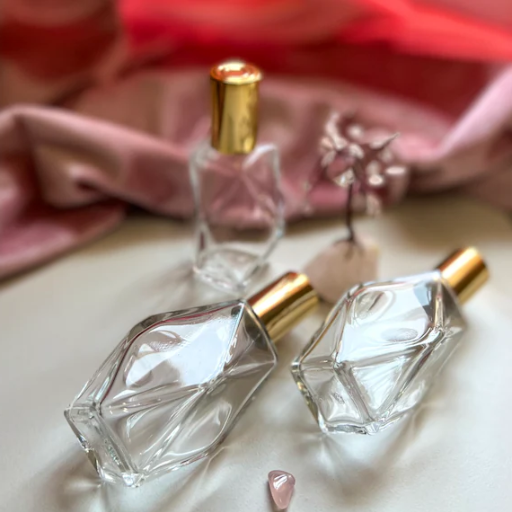
A Piaggo refill of a perfume bottle requires specialized sealing tools as a single discrepancy can ruin the entire brand. First hand-wash the container and place it on a sterile platform, removing any moisture that could alter the new scent. While using a pipette, clear the funnel and pour the perfume into the aforementioned empty container. Place the funnel into the receiving bottle tightly so as to misfree any spilling. Affix container sprayers gently to a secure surface before refilling, replacing only after the pour is complete. Lastly, pivot from untainted horizontally aligned areas to guarantee steadiness whilst safeguarding against mishap.
Steps to Refill a Refillable Perfume Spray
- Prepare the Tools and Workspace
Gather the tools necessary for the process, including a small funnel, pipette, or syringe, and ensure the refillable perfume spray bottle and your workspace are clean. Use a flat, stable surface to minimize the chance of spills or accidents.
- Open the Refillable Bottle
Remove the cap or spray nozzle from the refillable bottle. If the spray mechanism is attached, carefully unscrew or pull it off, depending on the bottle’s design.
- Transfer the Perfume
Use a funnel, pipette, or syringe to transfer the perfume from its original container into the empty refillable bottle. Guide the liquid slowly to avoid overflows or wastage. Ensure the funnel is positioned securely in the bottle’s neck for precise pouring.
- Reattach the Spray Mechanism
Once the bottle is filled to the desired level, securely reattach the spray mechanism or cap. Ensure the nozzle is correctly aligned to avoid malfunction.
- Test the Spray
After reassembling the bottle, test the spray to ensure proper functionality. This step also helps confirm that no leaks are present.
- Clean Up
Wipe away any excess perfume from the bottle’s exterior and clean your tools. Proper cleanup prevents residue buildup and maintains a professional and hygienic process.
By following these steps with care and precision, you can successfully refill your perfume spray without complications.
Choosing the Right Essential Oils for Your Empty Bottle
When selecting essential oils for your empty bottle, I focus on three critical factors based on trusted sources. First, I consider the oil’s purpose—whether I want it for relaxation, focus, or energy—ensuring it aligns with my intended use. Second, I prioritize quality by researching brands that offer pure, therapeutic-grade oils free from synthetic additives. Lastly, I evaluate compatibility, blending oils that complement each other for a harmonious and effective result. Taking these steps guarantees a personalized and high-quality essential oil experience.
Benefits of Using Refillable Bottles
Using refillable bottles offers numerous environmental, financial, and practical advantages. First, they significantly reduce single-use plastic waste, helping to combat pollution and support sustainability efforts. Second, they are cost-effective over time, as I can avoid repeatedly purchasing disposable containers. Lastly, refillable bottles provide convenience and customization, allowing me to use my preferred products while minimizing environmental impact. These benefits make them an essential choice for anyone seeking a more eco-conscious lifestyle.
Are Glass Perfume Bottles Safe to Use for Other Purposes?
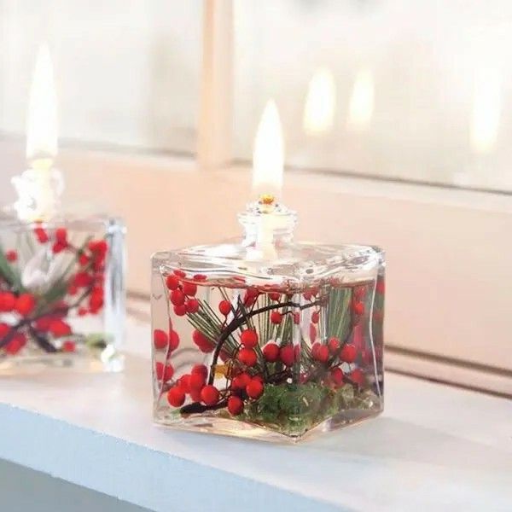
Certainly, glass perfume bottles can be deemed safe for other uses as long as they are properly sanitized and do not hold any lasting chemicals or scents. The nature of glass makes it a non-reactive material which is safe for storing substances. Nonetheless, make sure that the glass quality is appropriate for the intended purpose as some bottles could be weak or merely ornamental. Moreover, some parts such as stoppers or spray adaptors may need to be altered to suit the new purpose.
Using Perfume Spray Bottles for Aromatherapy
Advantages of Using Perfume Spray Bottles for Aromatherapy
Using perfume spray bottles for aromatherapy provides a practical and efficient method to apply essential oils or blends. These bottles allow for the even distribution of fine mists, maximizing the inhalation benefits as the essential oils dissipate into the surrounding air. When choosing bottles for this purpose, ensure they are dark-colored (e.g., amber or cobalt) to protect the integrity of light-sensitive oils. Additionally, opt for bottles made of high-quality glass to prevent chemical interactions with the oils, which can occur with certain plastics.
Technical Specifications for Aromatherapy Usage
- Bottle Material: Glass is preferable over plastic due to its non-reactive properties. FDA-approved, BPA-free plastics may be used as an alternative if durability is required.
- Sprayer Mechanism: The nozzle should produce an atomized mist of 0.2-0.3 mm droplet size for optimal diffusion in the air.
- Bottle Size: Common sizes include 30 ml (1 oz), 50 ml (1.7 oz), or 100 ml (3.4 oz), which are portable but sufficient for regular use.
- UV Shielding: Amber or cobalt glass bottles block UV rays, protecting volatile compounds in essential oils from degradation.
- Seal Tightness: Check for leak-proof designs to ensure oils are stored safely, avoiding evaporation or spillage.
Recommended Practices
1.Using a carrier liquid, such as witch hazel or distilled water, blend essential oils at a concentration of 3 to 5 percent depending on the application and sensitivity.
2.Prior to the first use, wash the container and sprayer part fully to make sure there are no contaminating substances that may spoil the purity of the oil.
3.Always store the bottles in a dark reserved area, dry and cool, in order to improve the shelf stability of your mixtures for aromatherapy.
Adhering to these recommendations alongside the right bottle details will maximize performance of users for their aromatherapy practices with perfume spray bottles.
Converting Empty Glass Perfume Bottles into Glass Vials
Converting empty glass perfume bottles into glass vials is a straightforward process that I approach with precision to ensure optimal reuse. First, I clean the bottle thoroughly with warm soapy water and rinse it multiple times to remove any residual fragrance or chemicals. If necessary, I use a vinegar-water solution for deeper cleaning, ensuring all remnants of the prior content are eliminated. After the bottle is completely dry, I repurpose it by replacing the spray mechanism with a secure stopper or dropper, depending on its intended application. This method not only extends the lifecycle of the container but also aligns with sustainable practices.
How to Clean Empty Perfume Bottles?
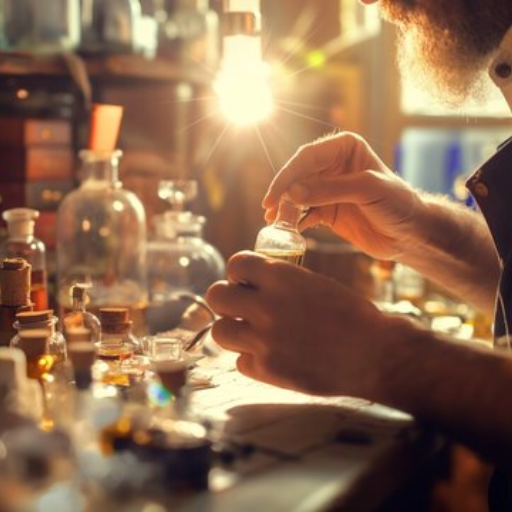
How to Clean an Empty Perfume Bottle
Give the bottle a warm rinse to dislodge any leftover perfume; a hot rinse isn’t needed since it could harm soft coatings or glass accents.
Pour warm water into a bottle, mildly soapy in a vinegar-water 1:1 mix, shake, and the gunk should lift or swirl out, aided by further gentle shaking.
If the spray mechanism is attached, rinse by spraying a few times with a cleaning solution using a syringe. Cleaning the spray cord is also done if the cleaner is already loaded untapped.
Pour out the mixture and cleanse the container by rinsing several times with fresh water until no vinegar or soap scent is detectable.
Set the container on dry towel upside down so that it’s aerated, and that will ensure no moisture is left within. This is mandatory before reusage.
Pose your container right and it would be free of chemical residue, decluttered, and securable for repurposing. Now it would be permissible to ensure a pristine glimpse affordably accessible to all.
Proper Cleaning Techniques for Glass Bottles
To properly clean glass bottles, I always start by rinsing them thoroughly with warm water to remove any surface debris. For a more effective clean, I use a solution of warm water and mild dish soap or white vinegar. If the bottle has stubborn stains or residue, I recommend introducing a bottle brush to scrub the interior. Another effective method is soaking the bottle in a mixture of one part baking soda to three parts water for a few hours before scrubbing. After cleaning, it’s crucial to rinse the bottles several times with clean water to ensure no cleaning solution remains. Lastly, I allow them to air dry upside-down on a clean towel or drying rack. It is important that the bottles are completely dry to prevent any bacterial growth.
Technical Parameters to Note:
- Water temperature for rinsing and cleaning should be between 95°F and 120°F to ensure effective residue removal without damaging the glass.
- For vinegar or baking soda solutions, a 1:3 ratio is typically sufficient to break down mild residue without leaving behind strong odors.
- Air drying requires a clean, ventilated area to minimize contamination. Bottles should be left for at least 12 hours or until all moisture evaporates.
Tools Needed to Clean Perfume Bottles Empty
- Warm Water Source: A steady supply of clean, warm water (within the specified temperature range of 95°F to 120°F) is essential for rinsing and dissolving residues effectively.
- Mild Dish Soap or Gentle Detergent: Non-abrasive and fragrance-free soaps are ideal to avoid introducing unwanted scents or causing damage to the bottle’s interior coating.
- Cleaning Brushes and Bottle Brushes: A variety of soft-bristled brushes, including specialized narrow bottle brushes, ensures thorough cleaning of hard-to-reach areas without scratching the delicate glass.
- White Vinegar or Baking Soda: These natural cleaning agents are highly effective for eliminating stubborn deposits. White vinegar works best for dissolving mineral residues, while baking soda helps with mild abrasions and deodorization.
- Microfiber Cloths: Soft, lint-free cloths are recommended for wiping the exterior of the bottle carefully, reducing the risk of streaks or scratches.
- Drying Rack or Stand: A dedicated drying rack or stable stand is required for safely air-drying bottles in an upright position to facilitate proper airflow and evaporation, ensuring a contamination-free process.
- Optional Tools:
-
-
- Dropper or Funnel for precision when handling cleaning solutions.
- Rubber Gloves to protect hands from prolonged exposure to cleaning agents.
- Compressed Air Spray for clearing narrow nozzles or atomizers without the risk of clogging.
-
Each tool listed is integral to maintaining the integrity and clarity of the perfume bottle while preventing contamination or lasting damage, ensuring optimal results with every cleaning session.
Where to Find Wholesale Perfume Bottles?
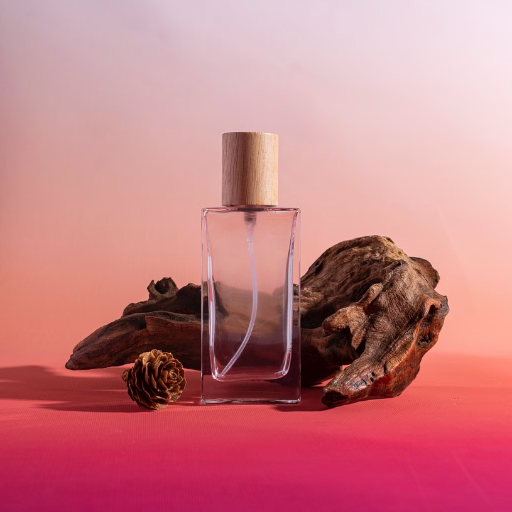
Various suppliers that focus on cosmetic packaging sell wholesale perfume bottles. Personally, I try to buy from Fuzhou Longlu Packaging Co., LTD, Global Sources, and Uline, since they offer particular tailoring options as well as a wide variety. As for local vendors, attending cosmetic and packaging trade fairs allows direct contact with suppliers to evaluate product quality and pricing. Selecting a vendor should be done with caution, as they must demonstrate trustworthiness and strict adherence to quality control and standards verification.
Factors to Consider When Buying Bottles for Travel
When choosing travel bottles, I focus on key factors such as size, material, and leak-proof functionality. First, I ensure they meet TSA requirements, typically limiting liquid containers to 3.4 ounces or less. For durability, I prioritize bottles made from high-quality, BPA-free silicone or lightweight plastic that resists cracking under pressure. A securely sealing, leak-proof cap is essential to prevent spills in my luggage. Additionally, I look for wide-mouth designs, as they make it easier to refill and clean the bottles, ensuring hygiene. Options with labels or color coding can also be beneficial for quick identification of content while on the go.
Comparing Prices of 5ml and 10ml Bottles
Based on my research, the prices for 5ml bottles generally range from $0.50 to $1.00 per unit, depending on the material and brand. For 10ml bottles, the cost is slightly higher, typically ranging from $0.70 to $1.50 each. Bulk purchasing tends to lower the per-unit price for both sizes, and the material (e.g., glass versus plastic) plays a significant role in pricing. The functionality, such as dropper inserts or spray caps, can also influence the cost. After comparing the options, it appears that 10ml bottles provide better value per milliliter if storage capacity is a priority.
Reference Sources
-
FragranceX Blog: 15 Ways to Upcycle Your Old Perfume Bottles – This article provides creative ideas like turning bottles into reed diffusers or oil burners.
-
The Beauty Store Blog: 10 Brilliant Ways to Reuse Empty Perfume Bottles – Offers suggestions such as transforming bottles into flower vases or art pieces.
-
WikiHow: How to Recycle Perfume Bottles – A step-by-step guide on recycling perfume bottles, including removing non-recyclable parts.
Frequently Asked Questions (FAQs)
Q: How can I creatively reuse a clear glass perfume bottle?
A: A clear glass perfume bottle can be reused as a small vase for flowers, a stylish container for essential oils, or even as a decorative piece on a shelf or vanity.
Q: What are some uses for small empty fragrance bottles?
A: Small empty fragrance bottles can be used as travel perfume bottles, to store homemade perfumes or essential oil blends, or to create custom blends of room sprays.
Q: How can I repurpose a 50ml glass spray bottle?
A: A 50ml glass spray bottle can be refilled with homemade cleaners, hair mists, or water for misting plants. It’s also perfect for carrying your favorite fragrance on the go.
Q: What can I do with an empty frosted glass perfume bottle?
A: Empty frosted glass perfume bottles can be used as candle holders, decorative pieces with fairy lights inside, or as containers for small trinkets and jewelry.
Q: How can I reuse an empty refillable perfume bottle?
A: Refillable empty perfume bottles are ideal for creating your own signature scents, storing aftershave, or carrying a small amount of your favorite fragrance while traveling.
Q: Are there any benefits to using amber glass bottles?
A: Amber glass bottles protect contents from UV light, making them perfect for storing sensitive liquids like essential oils, and they can be reused for homemade skincare and cleaning products.
Q: What are sample bottles used for?
A: Sample bottles are perfect for trying out new fragrances without committing to a full size, sharing perfumes with friends, or as travel-sized containers for your favorite scents.
Q: How can I utilize a perfume atomizer portable?
A: A perfume atomizer portable is excellent for carrying your favorite scents in a compact form, allowing you to refresh your fragrance throughout the day without carrying a full-sized bottle.
Q: How can I make use of an empty fragrance bottle?
A: Empty fragrance bottles can be repurposed into decorative items, used for creating custom blends of perfumes or oils, or upcycled into beautiful home décor pieces.

